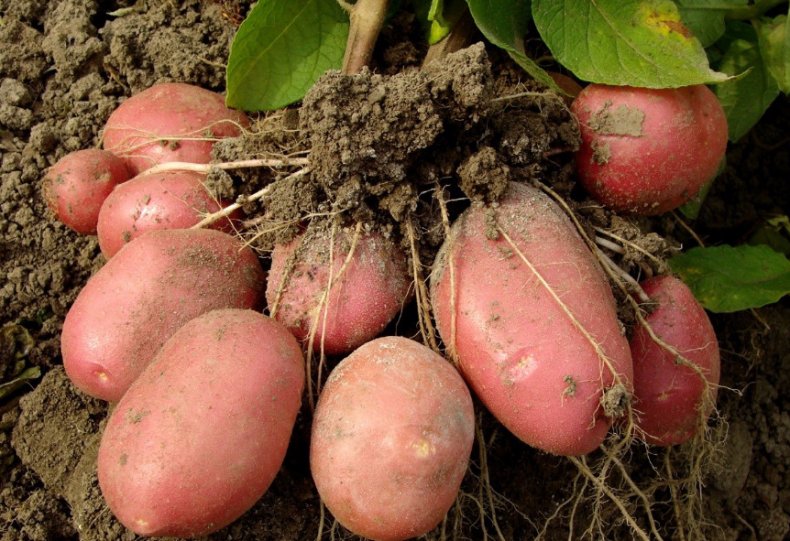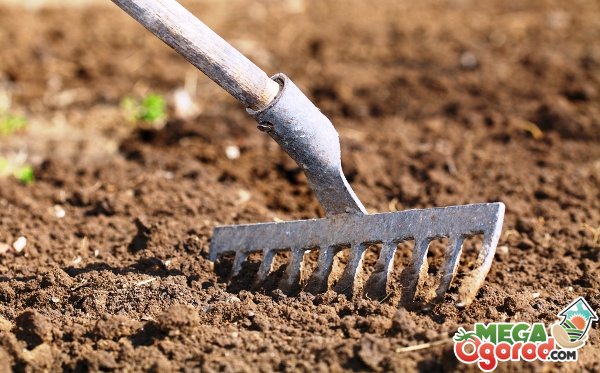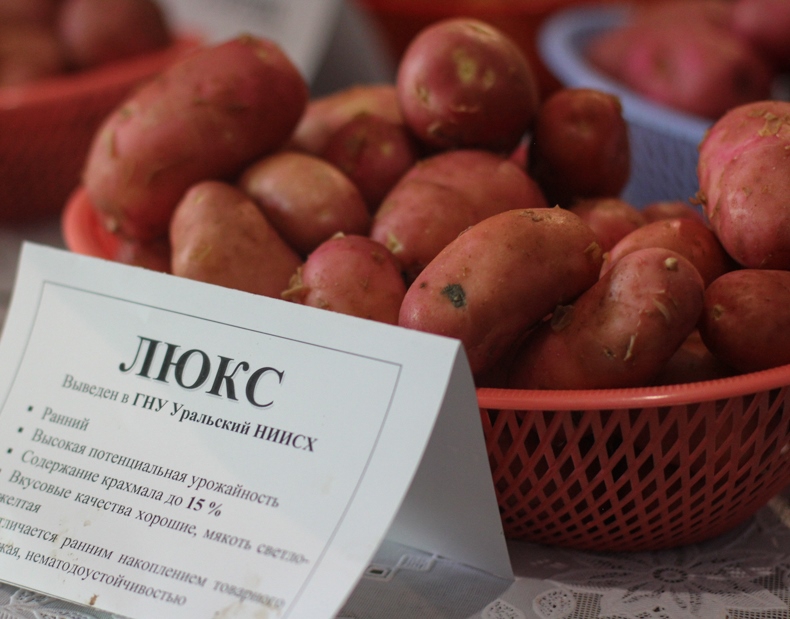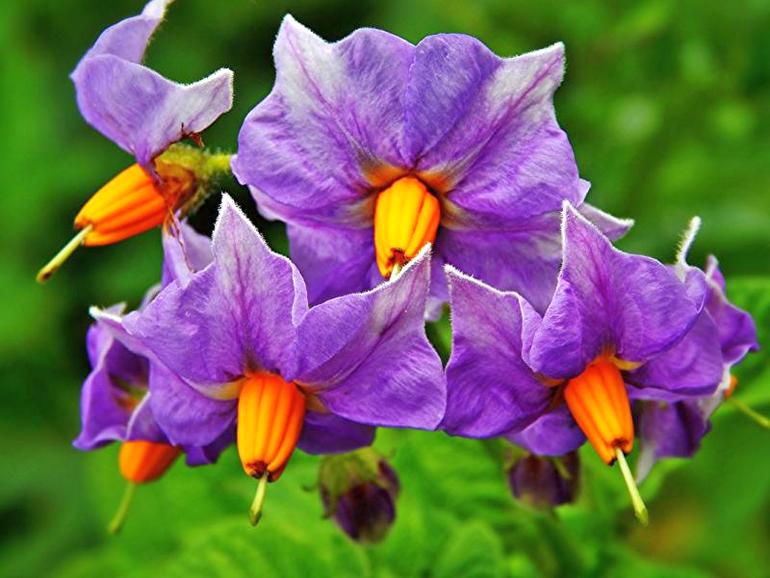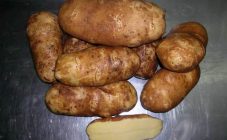In the consumer basket of the domestic user, potatoes occupy one of the leading positions; in many families they are considered an indispensable product. Each villager or gardener has his own approaches to growing this crop, but in all cases, the most important thing is to choose the right variety.
Rosalind potatoes belong to the category of the so-called "industrial" or "table" types. Due to the fact that it has a wonderful taste, as well as high yield rates, most private farmers around the world prefer it.
History
Rosalina potatoes are a unique result of long-term research carried out by a group of German breeders. The well-known commercial company “Europlant” (Germany) is engaged in its promotion to the world markets. The resulting varietal hybrid is recommended by the relevant Russian authorities for cultivation in most regions of the country.
In 2002, it was entered into the State Register for the Central agro-technical region of the country, but by 2016 it was excluded from it due to the applicant's refusal of the patent.
Description
The main indicator that distinguishes Rosalita varietal potatoes from other vegetable crops is its early maturity, which results in an enviable yield.
In order to describe in detail the potatoes of this variety, first of all, you need to pay attention to the following characteristics:
- The grown bushes of the plant have an average height (up to a meter).
- Its sheet plates are characterized by a flat and open surface.
- Their color is deep green, there is a slight waviness along the edges.
- The buds of this variety fall off even before the inflorescences open.
At an early stage of Rosalind's development, her bushes look erect and do not exceed half a meter in height. The young foliage growing on them is not very large.
Tubers of the culture can reach 60-110 grams by weight, up to 16 of these potatoes ripen on each bush. In their shape, they resemble a regular oval; at the same time, their peel is smooth to the touch (its color is slightly reddish).
The flesh of Rosalind's potatoes, the description of which can be found in this section, has a yellowish tint.
In addition, the rosalind variety has a good keeping quality (during its long-term storage, about 95-97% of tubers remain intact).
Agrotechnics
Disembarkation
The condition for obtaining a bountiful harvest is the correct choice of soil for potatoes. Well-loosened and naturally ventilated soils with a high moisture content are optimal for a hybrid with a name consonant with the word "rose".
At the preparatory stage, disinfection is organized not only for the planting material itself, but also for the soil under it. For this purpose, potato tubers are processed with special formulations like "Kolfugo super".With their help, it is possible to protect future sprouts from most garden diseases, soil treatment with "Force" or "Aktar", for example, contributes to their good germination.
Means for soil disinfection are prepared in a proportion of 0.5 kilos per hundred square meters and help to get rid of the wireworm immediately after planting the potatoes.
You should proceed to planting procedures at the end of the frost period, when the soil in the beds warms up to about + 5-8 degrees. In the process of planting, rows of potatoes are arranged along a line from north to south, holes are dug to a depth of 6-10 cm (at a distance of about 65-70 cm from one another). The distance between the rows is maintained within 25-30 cm.
Care
Caring for this variety of potatoes comes down to the following standard procedures:
- Weeding and shallow loosening (hilling).
- Moistening the soil (watering it).
- Fertilization.
When weeding and hilling a potato bush, wet soil must be scooped up to its tubers, which guarantees a good harvest.
The first hilling is tied to the time of emergence, all subsequent ones are carried out with an interval of about 3.5 weeks.
A mixture of peat and manure with the addition of a small dose of wood ash is used as organic matter. This composition is applied under the bushes several times (after the appearance of the first shoots, at the time of blooming and three weeks before harvest).
In the first case, nitrogen-containing compounds are used, in the second, potassium and phosphorus are introduced into the soil. About 20 days before digging up the potatoes, they are fertilized with a mixture of slurry (25 ml) and a superphosphate solution (30 grams per 10 liters of water).
At the same time, organic fertilizing is introduced, significantly improving the composition of the soil and somewhat loosening it.
Among the known diseases, the greatest danger is late blight, which damages not only the tubers of the plant, but also its aerial part. The first signs of the disease can be judged by the appearance of dark spots on the leaves. To protect against it, it is recommended to use special chemicals (copper sulfate, in particular), sprayed evenly over the tops.
Advantages and disadvantages
The advantages that make up the peculiarity of this type of potato include the following characteristics:
- Unpretentious care and the possibility of commercial use.
- Excellent taste characteristics.
- The high starch content in tubers is a property due to which this variety is widely used as a raw material for the production of dry powders, chips and table starch.
- Record yield indicators.
- The presence of a dense skin that allows the finished product to be transported over long distances and left for long-term storage.
The characteristic of this variety will turn out to be incomplete, if not to say a few words about its shortcomings, which are manifested mainly in poor protection against a number of pests. To increase the survival rate of the plant, prophylactic treatment with compounds that protect against the Colorado potato beetle, wireworm and nematode is necessary.
There are many analogues of this type on the domestic market. However, despite the similar external signs and features, they are significantly inferior in terms of basic indicators to the original (if we consider each parameter separately).

